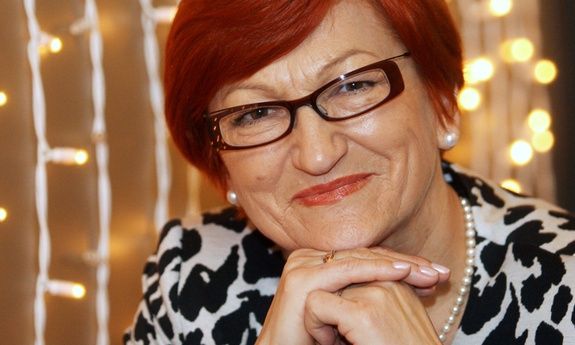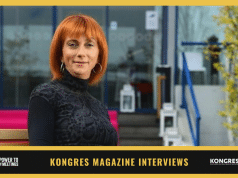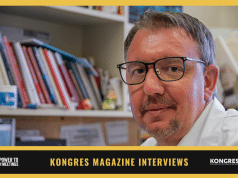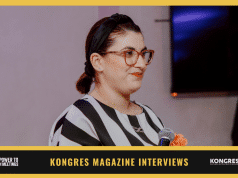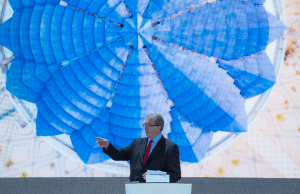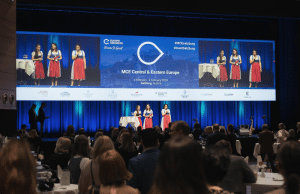A guru of modern management (according to Business Horizons magazine), Danica Purg is one of the world’s most prominent leaders in international management. Purg had to overcome gender perceptions to achieve success. A special chapter about her leadership journey was published in the book ’Women and Leadership Around the World’ and the American Chamber of Commerce chose her as a business leader role model for young professionals. Purg is president of CEEMAN, the international association for management development in dynamic societies, and also leads the European Leadership Centre (ELC).
Purg is well recognised in her home country, Slovenia, where 30 years ago she founded the IEDC-Bled School of Management, one of the leading international management development institutions in Europe. Slovenia’s president awarded her with the “Honorary Order of Freedom” for her contribution to management development in Slovenia and CEE.
We talked to this incredibly inspiring woman about Bled and congress tourism, her School of Management, about women and their struggle in their career path, and asked what advice she would offer young professionals.
Q: You have (co)organised many events in Bled. What is your opinion in regards to event/congress organisation in Bled? What are the main attractions and what are the challenges?
Bled is an environmental diamond, one that has not been necessary to cut and polish to achieve such beauty. The town already has a long tradition of organising conferences and sports events. There is a sufficient professional basis. By upgrading its range of accommodation and taking the final step to perfect its services, Bled has become of the most attractive places to host important events of all kinds. With Ljubljana and its cultural institutions nearby, adding to the interest and options, a stay in Bled is even more attractive.
Q: How do you perceive the growth in tourism in Bled?
The growth in tourism in Bled shows that the town is already capable of attracting a substantial percentage of the general growth in this field. It does mean, however, that it is necessary to create high level provisions in accommodation that are perhaps unnecessary for large groups of tourists, but in accordance with the higher demands of international conference participants.
Q: Your IEDC-Bled School of Management is renowned for its interesting appearance: it looks like a gallery with more than 200 pieces of modern and contemporary art. How do you perceive the role of art in management style?
Management and leadership are artistic activities. The accent is increasingly on the “soft” characteristics. Of course, finance, marketing etc. remain important, but leaders in this complex and fast world need to be “agents of change” and need to be creative and innovative. This is where they can learn from arts.
Q: Which direction of creative management would you recommend for congress tourism in Bled?
I am already making a place for cultural tourism in Slovenia. Bled is very well situated for that. It has a culturally rich environment and is located at a distance of between 50-150km from Austria and Italy. The town is also well positioned to organise conferences on environmental (water, forest, agricultural) issues. This means that Bled has to hire well-known specialists in these fields, who can bring high level tourism to the town.
Q: What is it that keeps you in Bled, considering that, with your expertise and profile, you could base yourself anywhere in the world?
One can’t find such an environment as Bled anywhere. I chose Bled out of some ten possible locations to build a school. My inspiration was IMD Lausanne on Lake Genèva. Of course, sometimes I also think that our base could be anywhere, as I have the feeling that I continuously have to explain to people where Slovenia and Bled are. That was the case at first, but once they visit Bled, people always come back.
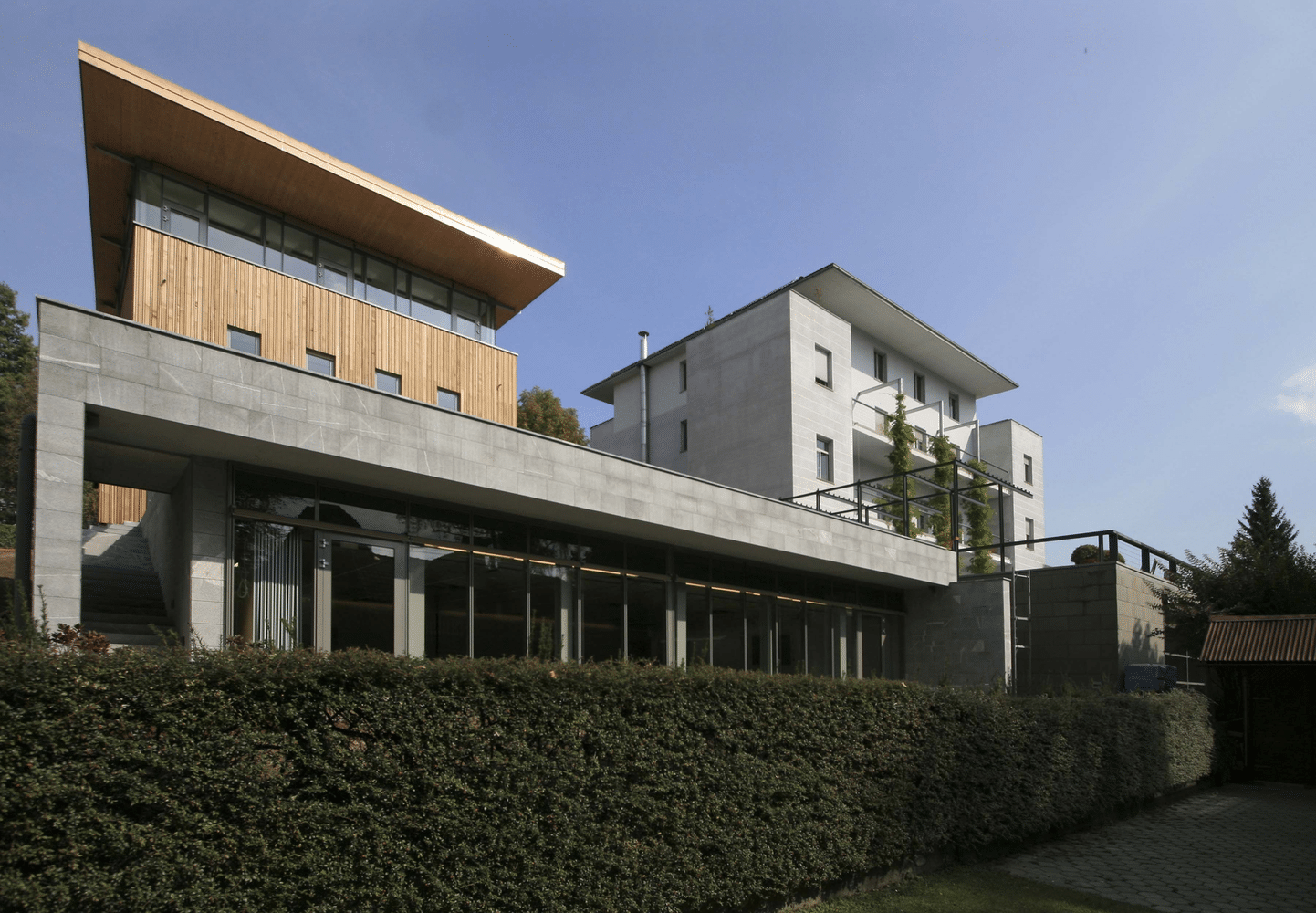
Q: You are a frequent speaker at European and American universities and international conferences. How would you compare the Slovenian/European management style to that of America? What is your experience of congress organisations in the United States?
Our European style is more stakeholder than shareholder oriented. We don’t believe, as in the case in the US, that what is good for shareholders is good for everybody. We have too many examples of the opposite. This also implies that Europeans are more looking to the long term. There was a time when, under US influence, European managers were under pressure to think and act in the short term. It doesn’t fit our mentality and our history. The positive side of it is that we have raised our tempo of innovating.
Q: A special chapter about your leadership journey was recently published in the book ’Women and Leadership Around the World’. To what extent, if at all, have you stumbled upon objections and obstacles in your career path on the grounds of your gender? How did you overcome such situations?
I am aware of the obstacles. There is discrimination, there are prejudices, the “child penalty” exists, there are unacceptable gaps in payment between women and men etc. If you are asking about my personal experience, at the time when I was employed in a political environment I saw that my honesty and straightforwardness were not appreciated. That was partly because of being a woman in a man’s world, but probably more because of the culture of the institution.
Later, when I was establishing the management school, which I was asked to do by a man, I initially experienced a lot of support, particularly from male colleagues from other European schools. They were intrigued by the challenge taken on by a relatively young woman.
Q: Based on your experience and observations, how is the path for female leaders paved today? What would your advice be to them?
The path for female leaders is often poorly mapped out. A lot of women have to do it by themselves. In some countries there is a quota for female business leaders, and in a number of academic institutions they make efforts to attract more women. However, there is still quite a way to go to reach real equality. It is not only a mind-set question among men, but also amongst women themselves.
Q: You were chosen by the American Chamber of Commerce as a business leader role model for young professionals. In addition, Business Horizons magazine listed you as a guru of modern management. What would you recommend to young professionals in the field of event organising? What is it that what would make them distinctive leaders?
Continue to be curious. Look around in the world. Try to learn from the best examples in your field. Try to be involved in successful teams. Develop team building skills. Try to discover the secrets of high performing teams. Absorb all the new technology and innovations that can help you be successful. Use your imagination and creativity. Be an artist. And say often: “Yes, of course”, with a smile on your face. Seeing you smiling and with a positive attitude, your colleagues will do the same.
